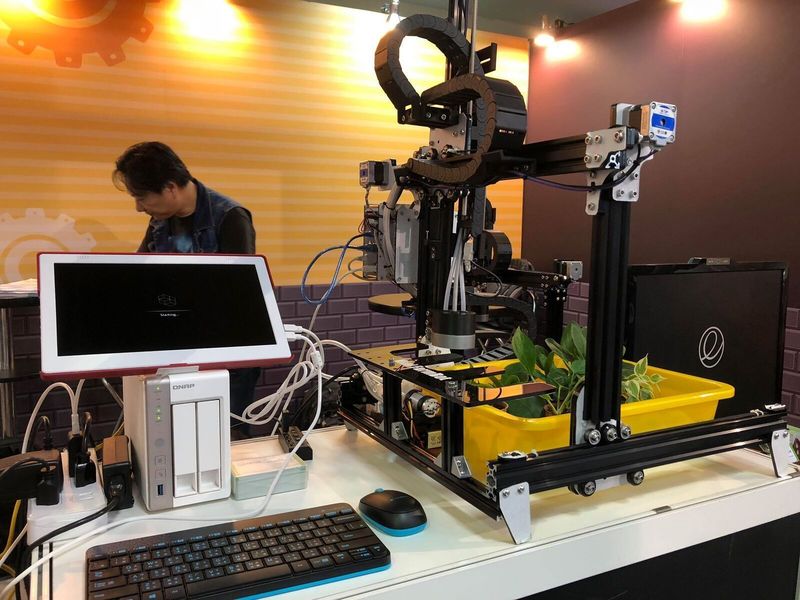QuAI realizes a healthcare AI diagnostic system, improving diagnostic accuracy and efficiency!
569
0
·
2019/07/23
·
4 mins read
☕
WriterShelf™ is a unique multiple pen name blogging and forum platform. Protect relationships and your privacy. Take your writing in new directions. ** Join WriterShelf**
WriterShelf™ is an open writing platform. The views, information and opinions in this article are those of the author.
Article info
Categories:
⟩
⟩
⟩
⟩
Tags:
Date:
Published: 2019/07/23 - Updated: 2020/05/28
Total: 866 words
Like
or Dislike
More from this author
More to explore












Background: From information to knowledge
For the past 14 years, QNAP has been focusing on creating better storage solutions, and redefining Network-attached Storage (NAS) through constant product innovation. In 2018, QNAP launched the QuAI artificial intelligence software development platform. This platform bestows high-capacity NAS systems with intelligent features, and allows data scientists and developers to create, train and optimize AI models on their QNAP NAS.
AI case study: the greatest crossover between data scientists and doctors
In February 2018, the QuAI team paid a visit to a renowned medical research institute in Taiwan and met with several specialists and medical professors to discuss the feasibility of deploying AI in medicine. The data needed is the images commonly used by medical diagnostic teams, showing the characteristics of lesions, that doctors can use to form a diagnosis based on their experiences. However, many of these characteristics can be extremely subtle, making the interpretation of these images immensely difficult. Therefore, QNAP is able to enhance the efficiency and accuracy of the doctor’s interpretation of the images through AI technology.
This process is repeated for continuous improvement and optimization of the model architecture and algorithm to establish a diagnostic model dealing with medical images. With the help of a team of leading Taiwanese doctors in labeling the medical images, the QuAI team was very confident of completing this AI project.
Cancer of the eye: Age-related Maculopathy
Age-related maculopathy is the degeneration of the central part of the retina that develops with age. The problem with this disease is that it does not have obvious symptoms during its early stages. If discovered early, treatments can significantly halt the progression of the disease. Besides, it can be effectively detected through Optical Coherence Tomography (OCT).
However, the medical team pointed out that “Diagnosing macular lesions through medical imaging is a time-consuming and labor-intensive task. Therefore, AI may be possible to significantly shorten the OCT image interpretation time, helping doctors make accurate diagnosis, and thereby allowing patients to receive treatment earlier and reduce the risk of losing their sight.
It all begins with storage: Storage solution for medical data
The first challenge of this project is to find a suitable storage space for the massive quantity of OCT images, and it must be one that comply with associated requirements. Electronic protected health information (ePHI) is highly confidential and should comply with HIPAA (Health Insurance Portability and Accountability Act ) stipulations. Not only does the high level of security accorded by QNAP NAS comply with HIPAA specifications, on January 2018, QNAP announced its plans to further expand on the integration of the Orthanc software suite. Orthanc is specially designed for the medical and health care industry. It is a lightweight professional medical imaging service software that transforms the QNAP NAS into a Picture Archiving and Communication System (PACS), which can significantly enhance the medical image processing workflow. The analysis of medical images can be significantly simplified by simply storing all Digital Imaging and Communications (DICOM) data onto the NAS, and making use of the advanced web-based DICOM viewer.
The benefits of having the QNAP NAS as the DICOM server include cost savings on IT equipment on the part of the hospitals, allowing the doctors on-call to connect to Orthanc through mobile devices and to view medical images sent to the NAS on their mobile devices through the Orthanc mobile phone app.
Learning phase: Implementing QuAI and JupyterHub
The QuAI team chose to use the TS-1685 that supports twelve 3.5-inch hard disks and four 2.5-inch SSDs. The operating system of the QNAP NAS – QTS – features GPU passthrough for allocating a graphics card to the AI applications. Therefore, the performance of the TS-1685 is compatible with a professional AI workstation, yet with a lower total cost of ownership (TCO).
Besides, the QuAI team used the in-house developed JupyterHub software to program the AI algorithms. The Jupyter is open-source software and can now run on QNAP NAS, widely used by data scientists.
The completed AI model can easily be deployed on multiple QNAP NAS, and the NAS will then serve as an Inference Server to allow different hospitals to use of the Age-related Maculopathy AI Diagnostic System concurrently. Therefore, the NAS at different organizations and institutions are enabled to have access to the central intelligence, and in turn can serve a wider population of people.
Vision: To build a medical care and diagnostic assistance system for rural areas
The QuAI team delivered outstanding results in a short period of 5 months. This AI Diagnostic System can help doctors make faster and more accurate diagnosis of age-related macular degeneration. The elderly in the rural areas need only complete the OCT imaging, and the diagnosis can be made immediately, allowing for arranging further treatment for patients in time when needed. The QuAI team will be moving on to explore more medical applications, and to develop high-precision AI-assisted medical services, including NGS gene sequencing, brain tumor detection, tumor analysis, and radiotherapy. It is our hope that with efforts from both the people and the government, Taiwan can become a global leader in AI in the near future.
Complete version : https://www.qnap.com/en/case-studies/quai-medical-ai/
More information :
QNAP IoT blog : https://qiot.qnap.com/blog/en